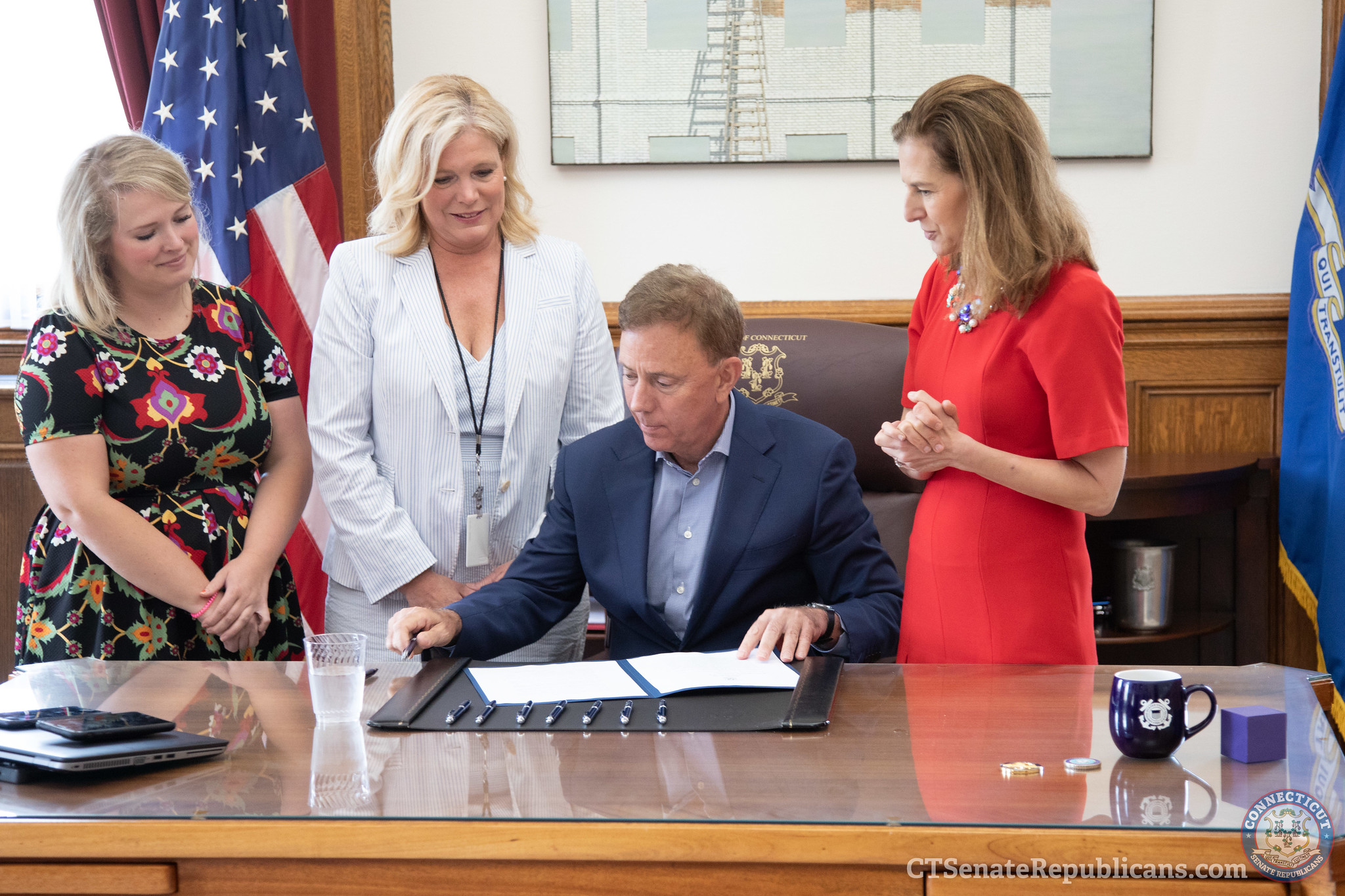Connecticut Gov. Ned Lamont's new transportation plan plows twice as much money into highways as it does transit, potentially keeping the economically sluggish state stuck in doldrums for another decade.
Two-thirds of the governor's 10-year $21-billion proposal, or about $14 billion, will go toward interstate and bridge improvements compared with $6.2 billion to upgrade rail service, a measly $450 million for expanded bus service, and no mention of any bicycle or pedestrian infrastructure whatsoever.
#CT2030 is a plan to transform Connecticut's transportation system to reduce congestion and make travel quicker, safer, convenient, and reliable.
— Governor Ned Lamont (@GovNedLamont) November 7, 2019
This includes improvements to our:
🚗Roads
🚆Trains
🚌Buses
✈️Airports
⛴️Ports
Check out the plan at https://t.co/lh90R1Veut pic.twitter.com/KSS1rC0E18
His CT2030 proposal includes up to $650 million to widen Interstate 95 lanes in Bridgeport, up to $300 million to rebuild the Interstate 91-Interstate 691-Route 15 interchange in Meriden, $300 million to improve another interchange between Interstate 91 and Interstate 84 in Hartford, $225 million to smooth congestion along I-84, and another $230 million to improve congestion on I-95 between New Haven and Rhode Island.
The plan's weight towards new highway construction over maintenance of existing roads has dismayed transportation advocates across the tristate area.
"This is a very highway-heavy proposal and $450 million for buses is really low," Melissa Kaplan-Macey, the director of Regional Plan Association Connecticut told Streetsblog. "We need to think about how we encourage people to take transit, buses and rail. When we think about highways we shouldn't just think about widenings."
A Lamont spokesman said that the reason why road spending nears $14 billion is to ensure the state receives eligible federal matching grants for transportation and to maintain the state of good repair for its road system.
Lamont's goal after spending $6.2 billion on rail upgrades is to shave 10 minutes from the New Haven-to-New York trip by 2023 so it would take one hour and 40 minutes; add frequency to the New Haven Line; and provide commuters a comfy ride on new rail cars. To do that, the state will flood Metro-North with $1.96 billion to replace aging rail bridges, $985 million on 132 new rail cars and 30 locomotives, $842 million to improve track speed, $350 million to enhance signals, and $140 million on rail maintenance shops on the New Haven Line.
But it is counterintuitive to invest billions of dollars to expand capacity on interstate highways while promoting alternatives to driving, advocates say. Once people get used to driving on wider stretches of the road, they will drive more frequently, emissions will rise, and congestion will quickly return to the same levels, according to the principle of induced demand.
"The big reason why expansion makes no sense is it directly undercuts the investment they're making in Metro-North," TransitCenter spokesman Ben Fried told Streetsblog. "If you're trying to improve train service and make that more attractive to people, it doesn't make sense to spend more money on competition for train service."
Most disappointingly, the governor's plan shortchanges bus networks whose low-income riders are in desperate need of better service.
The proposal does include $348 million for new electric buses, $8 million for upgraded shelters, and $100 million to improve service along Route 1 on the Nutmeg State shoreline. But there's no attention to making the bus system more reliable and frequent in Connecticut cities, syncing buses up with rail stations so passengers don't have long layovers, and expanding service between cities to give people more options to travel.
Then there's the likely rise in car emissions if highways continue to get fatter. A survey of 957 residents from CT’s Transportation Future found that 62 percent wanted a moratorium on interstate lane-addition projects while only 17 percent wanted wider highways and 92 percent favored improving existing rail and bus systems.
"If it was just 'state of good repair,' I don't think we'd be that upset about it, but it's interstate expansion in the face of global climate chaos," said Transport Hartford Coordinator Anthony Cherolis, who managed the survey. "They're still increasing Vehicle Miles Traveled over next 50 years and you can't have reasonable chance of meeting greenhouse gas targets while doing that in parallel."
To pay for the plan, Lamont would tap a mix of federal grants that could offer $750 million per year, low-interest federal loans, dedicated state funds, and 14 new toll gantries which have been scaled back from the 50 to 80 he originally proposed for state highway earlier this year.
The governor's office is floating modest user fee rates that charge passenger cars $0.50 to $1, $1.25 to $2.50 for medium-sized trucks and $3.50 to $7 for heavy trucks. Connecticut drivers would get a 20-percent discount on the tolls, but 40 percent of the revenue is expected to come from out-of-state drivers. Collections would primarily go toward maintaining bridges the gantries are located as well as 5 percent for local road and transit projects in the communities that host the tolls.
But the tolls, which have not graced Connecticut highways since the mid-1980s, have not been widely supported. State residents opposed electronic user fees by 59 percent in a March poll by Sacred Heart University.
Legislators balked at considering them in a special session this past summer forcing Lamont to scale back his revenue plan, and State Senate Democrats are rebuffing Lamont again this month over his latest proposal.
But lawmakers are removing a huge revenue stream from state coffers if they get their way.
"I hope it's put back on the table because I don't see a way forward without tolling for transportation investments," Kaplan-Macey said. "We don't ride transit for free, but we ride highways for free, and we're missing an opportunity for capturing revenue from out-of-state drivers to continuing to maintain roads we drive on in the state."






